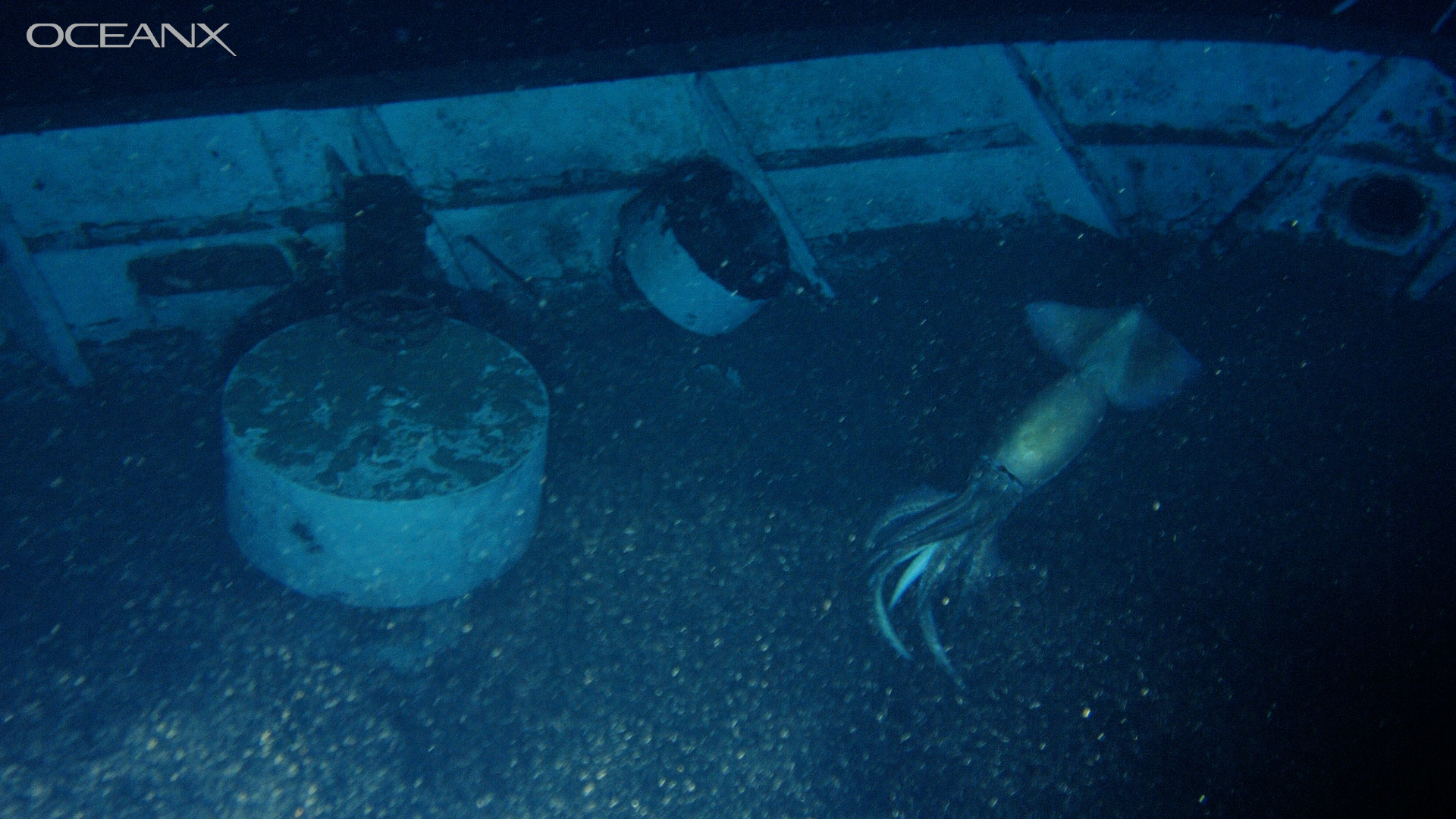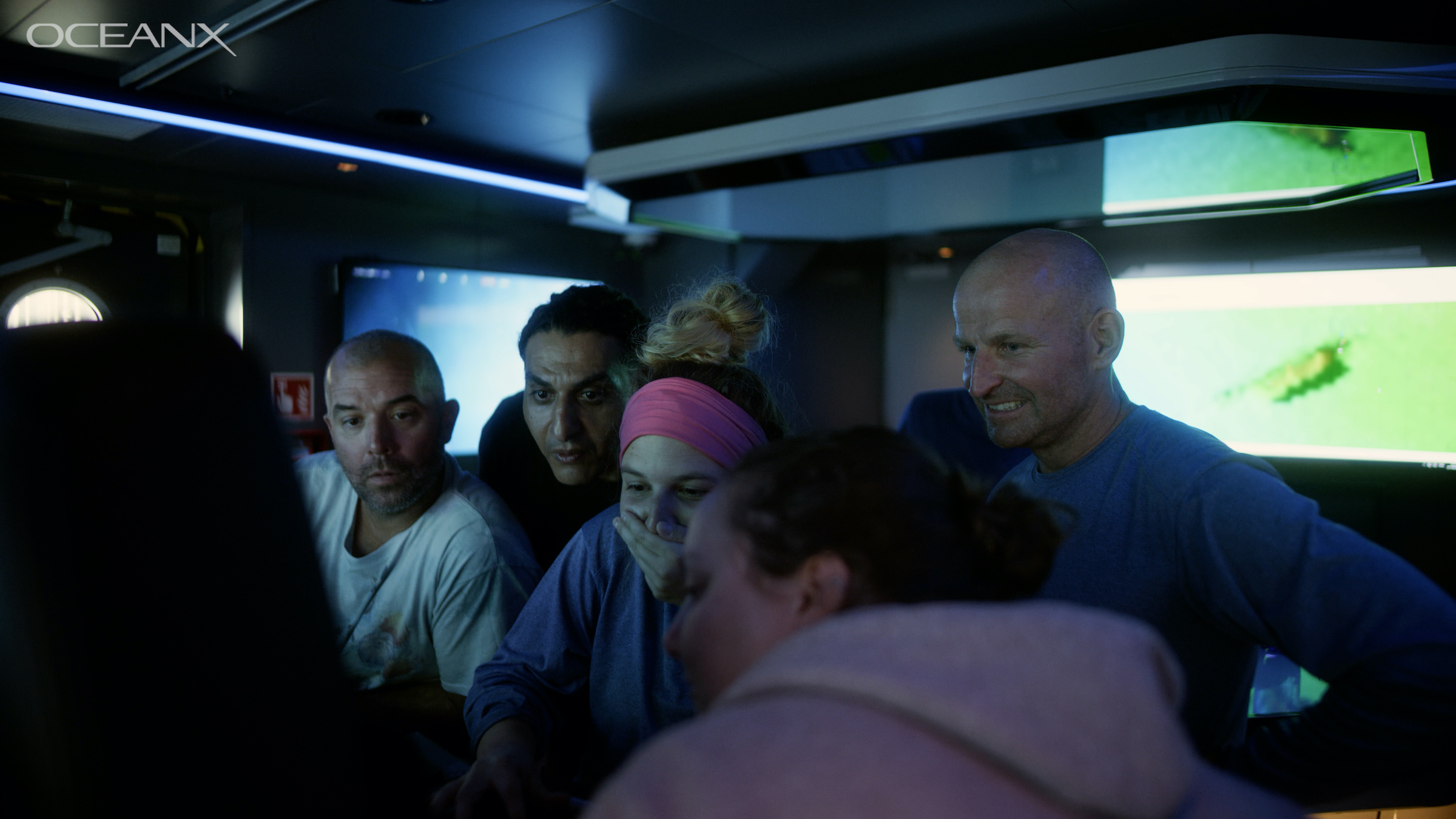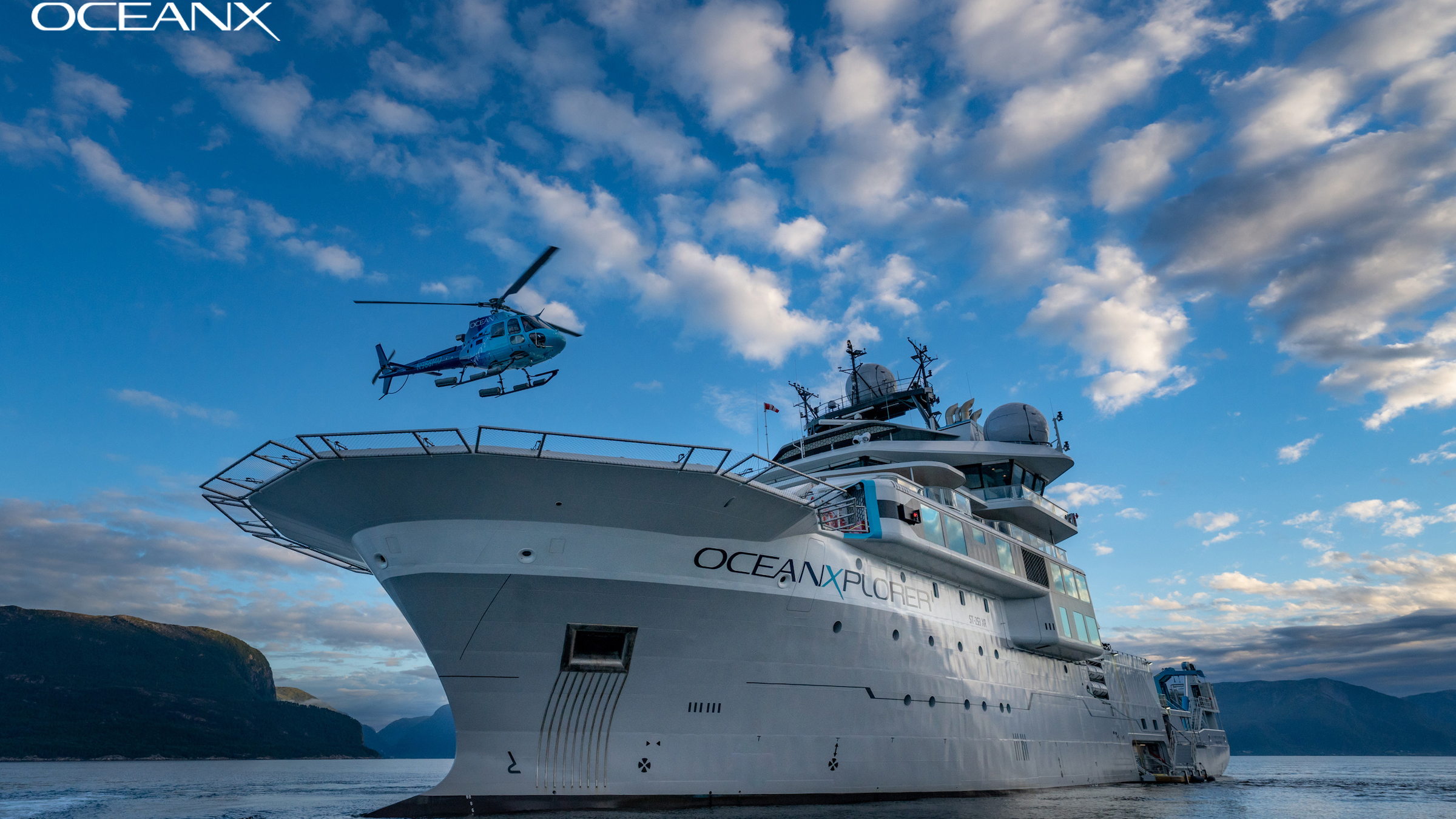Giant purpleblack flying squid photobombs crew investigating shipwreck
The team wasn't expecting to see a shipwreck … or a squid.

Scientists mapping the seafloor in the Gulf of Aqaba, the "right antenna" part of the northern Red Sea, recently made two remarkable sightings almost simultaneously: a sunken shipwreck and a mysterious big squid zipping around it, according to the marine research organization OceanX.
After sending down a remotely operated vehicle (ROV), the OceanX team quickly identified the shipwreck — it was the Pella, a ferry that caught on fire and sank in November 2011. The squid, however, took longer to identify. But it made plenty of cameos; the crew used the ROV and submersibles to visit the wreck three times, and each time they saw a huge squid swimming by.
After consulting with Michael Vecchione, an invertebrate zoologist at the Smithsonian's National Museum of Natural History in Washington, D.C., the crew finally got an answer; the cephalopod was a purpleback flying squid (Sthenoteuthis oualaniensis), and a giant one at that.
"We got photobombed by the giant purpleback," Mattie Rodrigue, science program lead at OceanX, told Live Science. "I was joking it was a made-for-TV moment."
Related: Release the kraken! Giant squid photos
The purpleback flying squid run ins happened in October 2020, when OceanX's research vessel, the OceanXplorer, was on its maiden voyage mapping the seafloor of the northern Red Sea. The crew was in the Gulf of Aqaba's Neom region, and was steadily cataloguing the region's underwater ecosystem and bathymetry with technology aboard the ship, including multibeam sonars and deep-sea vehicles.
Then, the ship's survey technician alerted Rodrigue that the multibeam sonars were picking up an anomaly about 328 feet (100 meters) long on the seafloor. Some crew members thought it was a large rock or coral reef, but others guessed it was a shipwreck. A subsequent investigation with the deep-sea vehicles confirmed it was the shipwreck of the Pella, which sank while en route to Nuweiba, Egypt, resulting in one passenger death.
Sign up for the Live Science daily newsletter now
Get the world’s most fascinating discoveries delivered straight to your inbox.
As the ROV approached the shipwreck's bow at about 2,788 feet (850 m) below sea level, a large squid "came toward us then swerved away," Rodrigue said.

The ROV has lasers that can help measure underwater objects, but the crew didn't turn them on in time. It's likely that the squid had a total body length of about 6 feet (2 m), said Vecchione, who spoke both with OceanX and Live Science. There are reports of mature female purpleback flying squid with mantles (the body or "hat-like" part of the squid) of up to 2.6 feet (82 centimeters), he said.
Purpleback flying squid come in five sizes, ranging from dwarf form to giant form, which this one likely was, Vecchione told Live Science. The squid's short and broad fins, as well as its body proportions, match those of a purpleback flying squid, and the Red Sea has a known population of giant form purpleback flying squid, he noted.



These squid are active predators that live in tropical and subtropical waters of the Pacific and Indian oceans, according to the Australian Museum. They live in the open ocean down to depths of about 3,280 feet (1,000 m), but swim frequently upward to shallower depths at night to feed. What's more, these muscular and speedy squid can cruise at speeds of 6.2 mph (10 km/h) with bursts of up to 22 mph (35 km/h), according to SeaLifeBase, an internationally maintained marine research site.
S. oualaniensis are harvested as bait for tuna in Japan and Taiwan, and they're also eaten by humans, "although the quality of the meat is relatively poor," according to the International Union for Conservation of Nature.
It's unknown if purpleback flying squid frequently hang out around shipwrecks, but the sighting of this individual (or individuals, it was unclear if there was more than one) raises the question, Vecchione said. It's possible that shipwrecks attract fish, which squid prey on, he noted.
Spotting the squid was a memory she'll never forget, Rodrigue said.
"It was just so spectacular for me," Rodrigue said. "It was already going to be an exciting day because we were thinking that we were going to see a shipwreck … but we had absolutely no idea that we were going to encounter such a magnificent and large animal."
Originally published on Live Science.

Laura is the archaeology and Life's Little Mysteries editor at Live Science. She also reports on general science, including paleontology. Her work has appeared in The New York Times, Scholastic, Popular Science and Spectrum, a site on autism research. She has won multiple awards from the Society of Professional Journalists and the Washington Newspaper Publishers Association for her reporting at a weekly newspaper near Seattle. Laura holds a bachelor's degree in English literature and psychology from Washington University in St. Louis and a master's degree in science writing from NYU.










